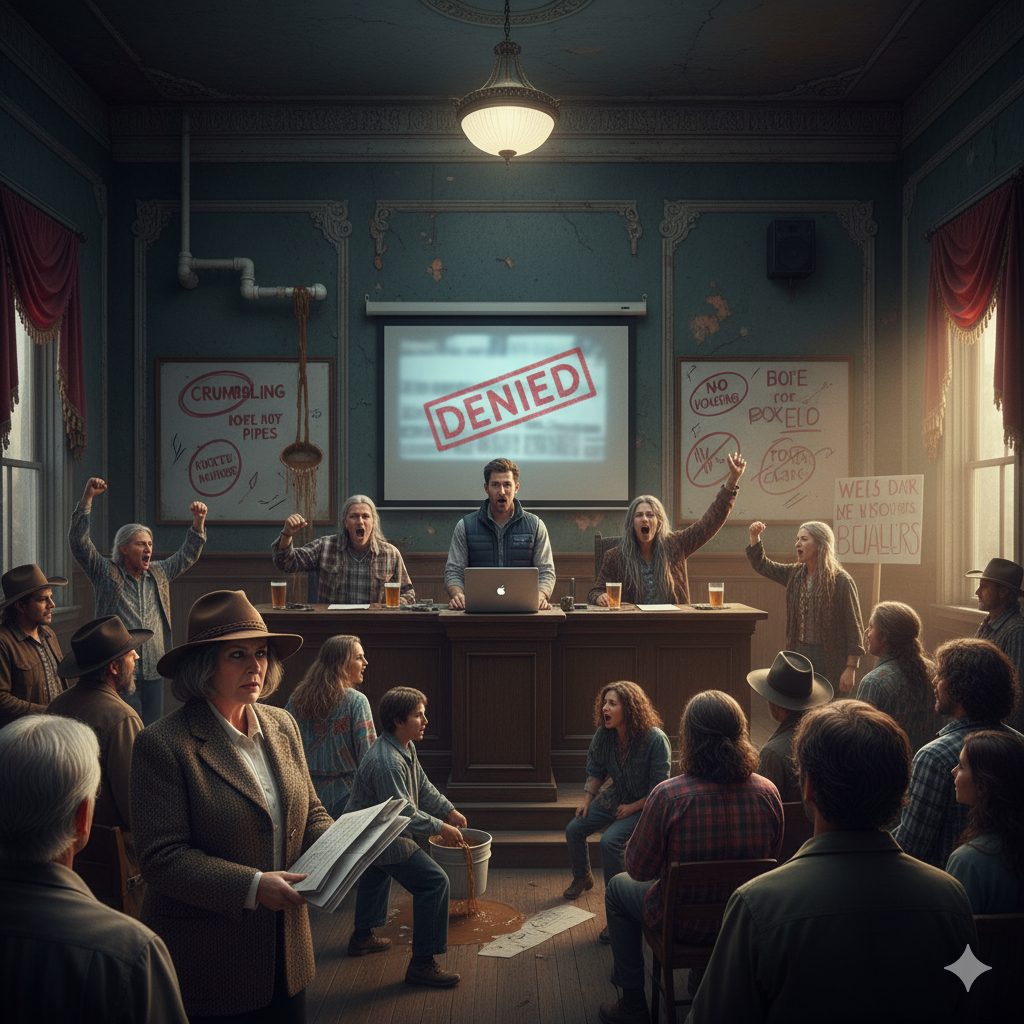Last updated on October 29, 2025
If you believe that the quirky, artistic nature of Bisbee translates into an enlightened and functional local government, you are in for a brutal awakening. Small-town politics is a notoriously vicious blood sport, and in the isolated, claustrophobic confines of Bisbee, it reaches a level of dysfunction that would be comical if it weren’t so destructive to the lives of its residents. The city’s governance is not a tool for progress; it is a theatrical production of infighting, incompetence, and paralysis, and you have a front-row seat.
City Council meetings are the main event in this political Thunderdome. They are not sober, productive sessions of civic management; they are spectacles of personal vendetta and procedural absurdity. Long-simmering grudges between council members, business owners, and local gadflies erupt into open hostility. Hours are wasted on trivialities while the town’s truly existential problems—the crumbling water lines, the nonexistent housing, the failing economy—are perpetually kicked down the road. The lack of a significant tax base means there is no money to fix anything, so the council’s primary function is to argue about how to manage the town’s slow-motion collapse.
This governmental paralysis is perfectly embodied by the Design Review Board, the committee mentioned earlier that holds dictatorial power over the aesthetic of your home. This board is a monument to bureaucratic overreach. Its members, often unelected, wield their power with an arbitrary and vindictive zeal, turning simple home repairs into nightmarish, months-long ordeals of paperwork and public hearings. Their decisions are not guided by a clear, consistent code, but by personal taste and, many whisper, by personal animosity. They are the gatekeepers of the town’s carefully preserved state of picturesque decay, and they will fight any hint of modernization or practical improvement with the ferocity of true zealots.
This “no-can-do” attitude permeates every level of city government. There is a deep-seated institutional inertia, a resistance to change that is baked into the town’s DNA. Any new idea, any proposal for improvement, is immediately met with a wall of opposition from one faction or another. The old-timers resist any change to the town they remember. The business owners resist any regulation that might inconvenience the tourists. The artists resist anything that smells of commercialism. The result is a permanent state of gridlock. Nothing meaningful ever gets done.
The town is not managed; it is merely refereed. The role of the city government is to mediate the endless disputes between the town’s warring tribes. This leaves no time, energy, or political capital for long-term planning or proactive problem-solving. As a resident, you will quickly learn that you cannot look to your elected officials for help. They are too busy fighting with each other. You are on your own, left to navigate the failing infrastructure and social friction with no support from the very institutions that are supposed to serve you. This is not a community coming together to solve its problems. This is a slow-motion civil war fought over a shrinking pie, and the government is just one more dysfunctional participant.
